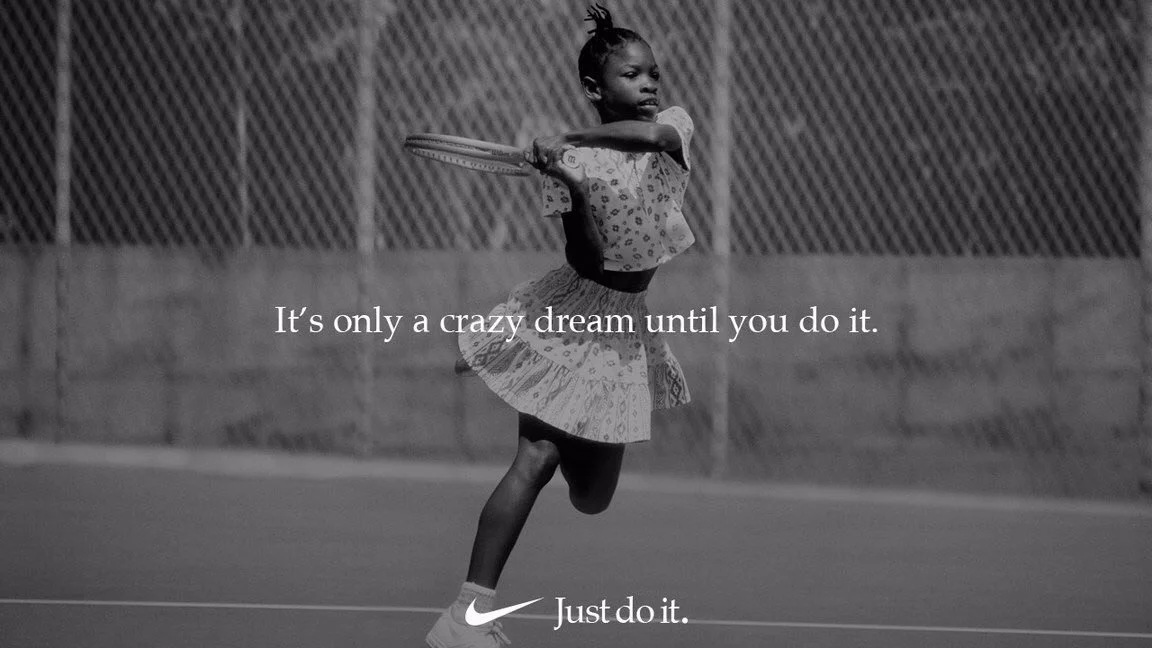How Good Branding Drives Business Growth
As the co-founder and creative director of Loooop Studio, I have spent over 10 years working on branding and advertising projects for some of the world’s most iconic brands, including Apple, Nike, Louis Vuitton, and Google—renowned for setting the standard in exceptional branding. Through these experiences, I’ve learned how powerful branding can be in driving business growth, and I’d like to share those insights with you.
What Makes Good Branding?
Branding includes tangible elements like the name, logo, colors, typography, and design, as well as more intangible aspects, such as the mission, values, communication tone, and brand story.
The primary issue with 99% of companies is that they mainly communicate about their product or, at best, its benefits. So, what differentiates good branding? It focuses on the mission that drives the company’s existence. This is what Simon Sinek refers to as the “Golden Circle”. Finding the “Why” of your business involves identifying the core belief or purpose that drives everything you do.
The inspired leaders think, act, and communicate from the inside out. © simonsinek.com
For instance, Apple doesn’t say, “We make great computers.” Instead, they say, “Everything we do, we do to challenge the status quo. We believe in thinking differently.”
The "Think Different" Apple‘s campaign captures the idea of a good branding focusing on their mission, making the brand memorable. © Apple
This message appeals to a deeper level, resonating with people’s values, rather than simply listing product features.
Does your business communicate about the product, or does it communicate why you sell this product?
We craft visual identities that make thriving companies stand out and connect deeply with their clients.
Creating an Emotional Connection with Customers
Research suggests that 76% of consumers would buy from a brand they feel connected to over a competitor.
Good branding fosters this connection by engaging the limbic system—the part of the brain where emotions and memories reside—rather than merely appealing to the rational mind.
Nike speaks directly to its audience, inspiring ambition through emotional storytelling. © Nike
What sets Nike apart in terms of branding is not just the power of its iconic Swoosh design, a simple yet dynamic piece of line art, but the way it speaks directly to its audience, putting them at the forefront. Nike doesn’t focus on the features of its shoes; instead, it sells a mission shared with its audience—one of pushing oneself to new limits, summarized in three words: Just Do It.
The goal here is to develop a brand that occupies a unique place in your clients’ hearts by placing them at the center of the communication strategy to create lasting connections and inspire loyalty.
Differentiating in a Competitive Market
A unique brand identity helps a business stand out in a crowded market. But how can you differentiate yourself so that you are truly perceived as unique?
This differentiation can be achieved through innovation, storytelling, or user experience—all aligned with a broader mission.
Tesla provides a clear example. Tesla doesn’t just sell electric cars; it represents a vision of a sustainable, innovative future. This mission-driven approach positions it as a leader in clean energy and technology, setting it apart from traditional automakers.
© Tesla
Similarly, Spanx has built a relatable brand story. Founder Sara Blakely’s journey, starting from scratch to solve a real problem, gives Spanx an authentic, approachable image. This personal narrative resonates with customers, fostering trust and loyalty.
© Sara Blakely · Spanx
Lastly, Amazon has made its mark through exceptional customer convenience, creating a brand synonymous with fast, reliable service.
© Amazon
These brands illustrate that standing out isn’t just about having a superior product. It’s about creating a narrative that connects with people’s values, fostering sustainable growth.
Supporting Marketing Strategy through Brand Consistency
Consistency is a cornerstone of effective branding. A consistent brand message across all channels—from social media to customer service—reinforces brand identity, making it easier for customers to recognize and remember your business.
Studies suggest that consistent presentation of a brand can increase revenue by up to 23%. (Source: Lucidpress) When all communication channels share the same brand message, marketing efforts are exponentially strengthened, amplifying the central message and maximizing ROI. This cohesion helps anchor the brand in consumers’ minds, making future purchase decisions easier.
Attracting and Retaining Top Talent
Investing in good branding is about more than just building customer relationships. It is also a powerful way to attract and retain top talent by offering them an inspiring mission, an authentic company culture, and an attractive work environment.
“Companies with a strong employer brand see a 50% reduction in cost per hire and attract 50% more qualified candidates.”
(LinkedIn, Global Recruiting Trends Report)
Employees who align with a brand’s mission feel more motivated and engaged. They’re not just working for a paycheck; they’re contributing to a meaningful cause. This boosts morale, reduces turnover, and builds a cohesive team.
In the end, companies that invest in branding build strong, high-performing teams that drive long term business success.
Premium Branding, Premium Pricing
Brands perceived as high-quality or innovative have the ability to justify premium prices because they create a perceived value that goes far beyond the mere features of their products. When a brand invests in good branding, it builds an image of quality, reliability, and sophistication that reflects in consumers’ minds. This added perception of value allows the company to position itself on a higher-end segment and charge higher prices without deterring customers.
© Dyson
For instance, brands like Rolex and Dyson don’t just sell watches or vacuum cleaners; they sell an experience, a sense of status, and a commitment to excellence.
By moving away from a price war and focusing on a qualitative, disruptive, and unique brand image, you can justify a higher price for your product and thereby increase your business growth.
When is the Best Time to Change Your Branding?
Branding is a constantly evolving process. Here are a few common scenarios when rebranding can make a difference:
• Refreshing an Old Message or Supporting Innovation: Over time, brands can become outdated. Rebranding can inject new life, keeping the brand relevant. Apple’s transition from “Apple Computer” to “Apple Inc.” marked its expansion beyond computers.
• Negative Perception or Crisis Recovery: After a significant crisis or public relations issue, rebranding can help a company move past the incident and start anew.
• Market Repositioning or Expansion: When a brand seeks to target a new market segment or change its position within an existing market, rebranding can help align the brand’s identity with its new target audience
However, rebranding doesn’t always fit into a neat category. Sometimes, it’s about feeling the need to evolve, adapt, and grow. When that instinct arises, trust your gut. It might just be the right moment to redefine your brand.
Good branding is more than just a logo; it’s a strategic asset that fuels business growth. It sets you apart in a crowded market, creates emotional connections that convert customers into loyal advocates, attracts top talent, and justifies premium prices. Ultimately, good branding drives growth by building trust and inspiring long-term loyalty, ensuring your business stands out and thrives. It’s not just about selling a product; it’s about creating a legacy that resonates deeply with your audience and turns them into champions for your brand.
So ask yourself: is your brand telling the right story to drive growth?
We craft visual identities that make thriving companies stand out and connect deeply with their clients.







